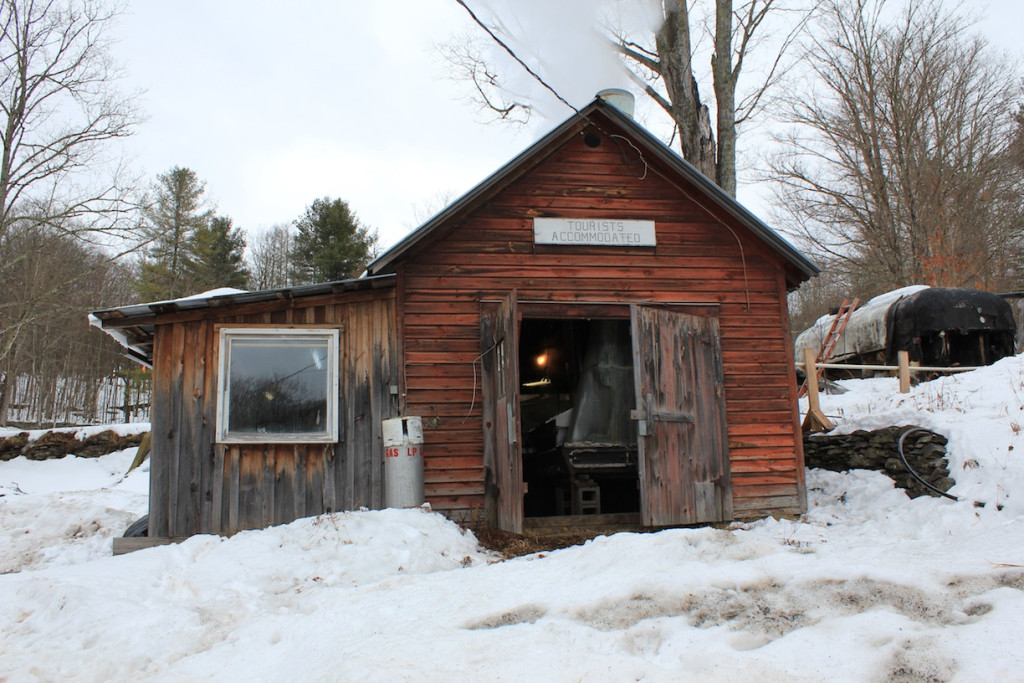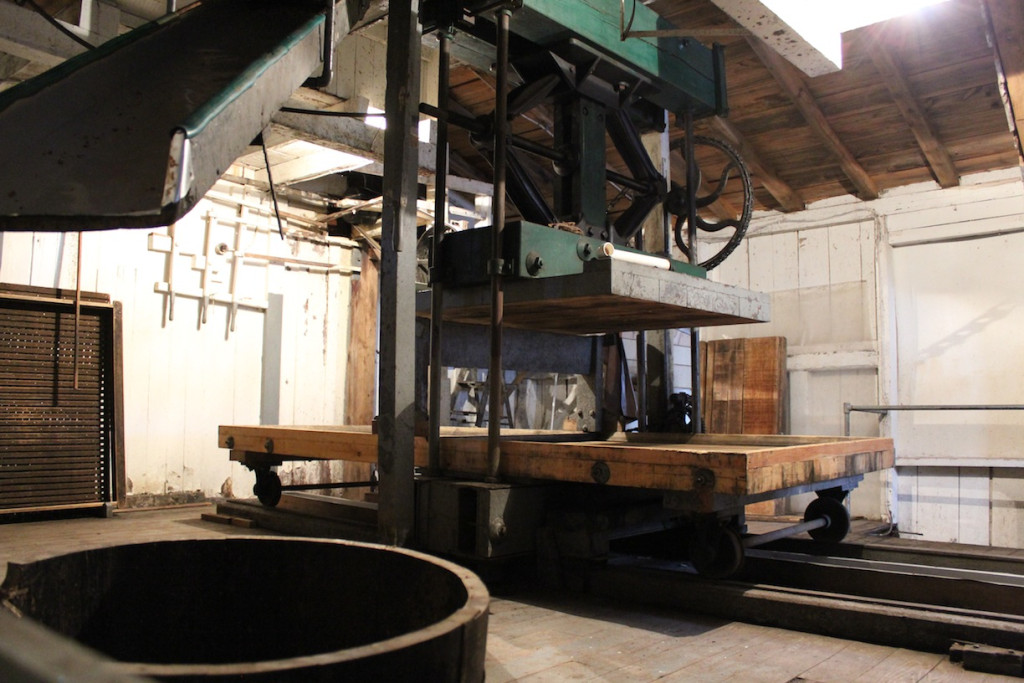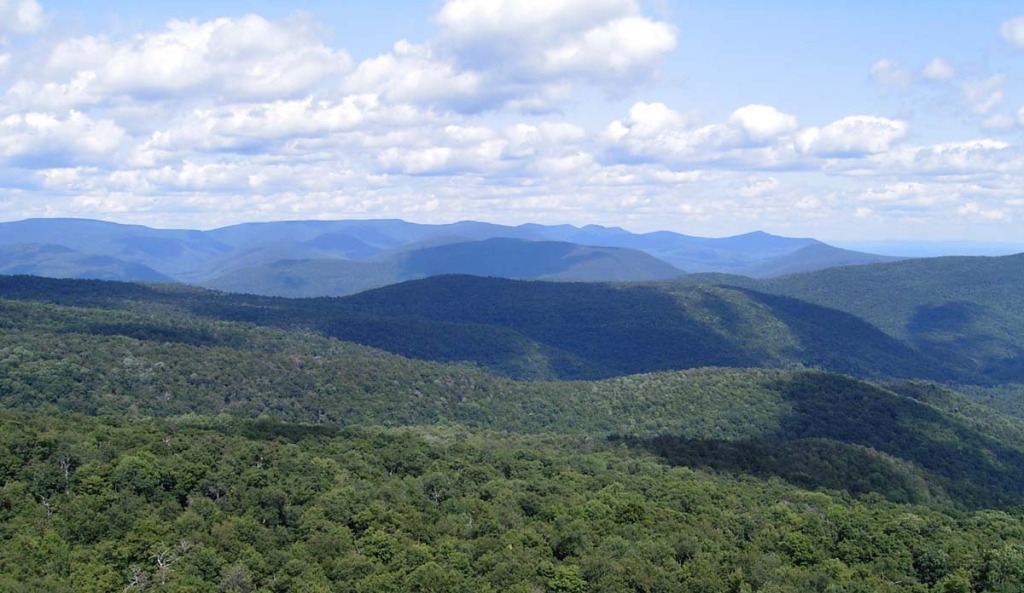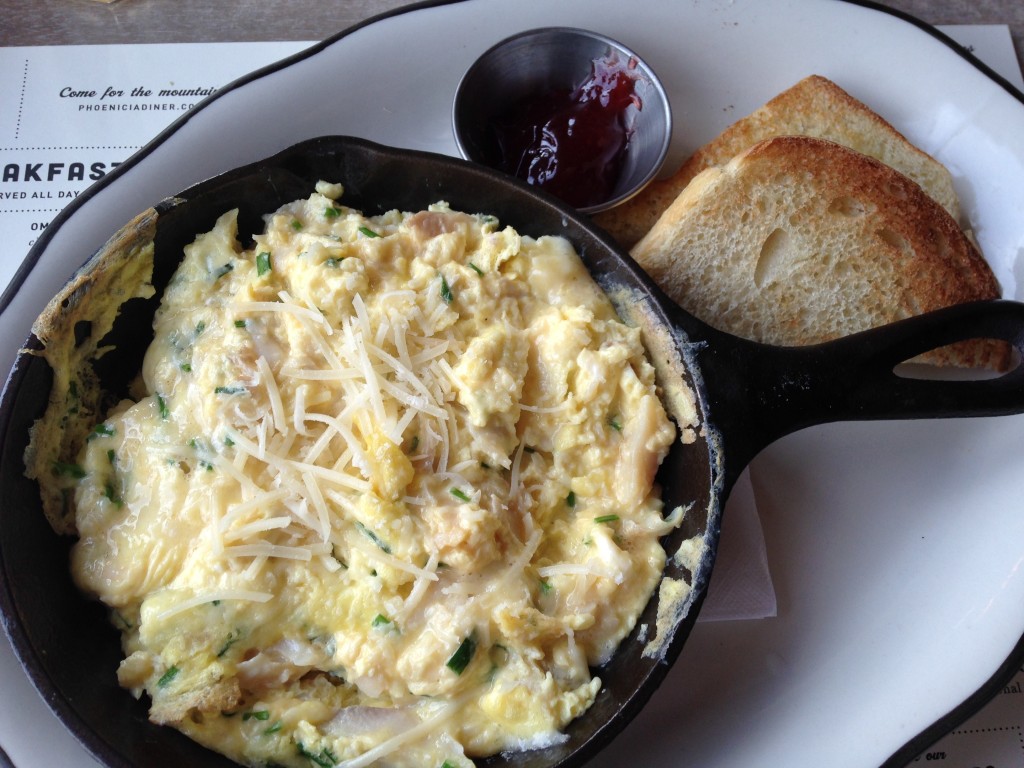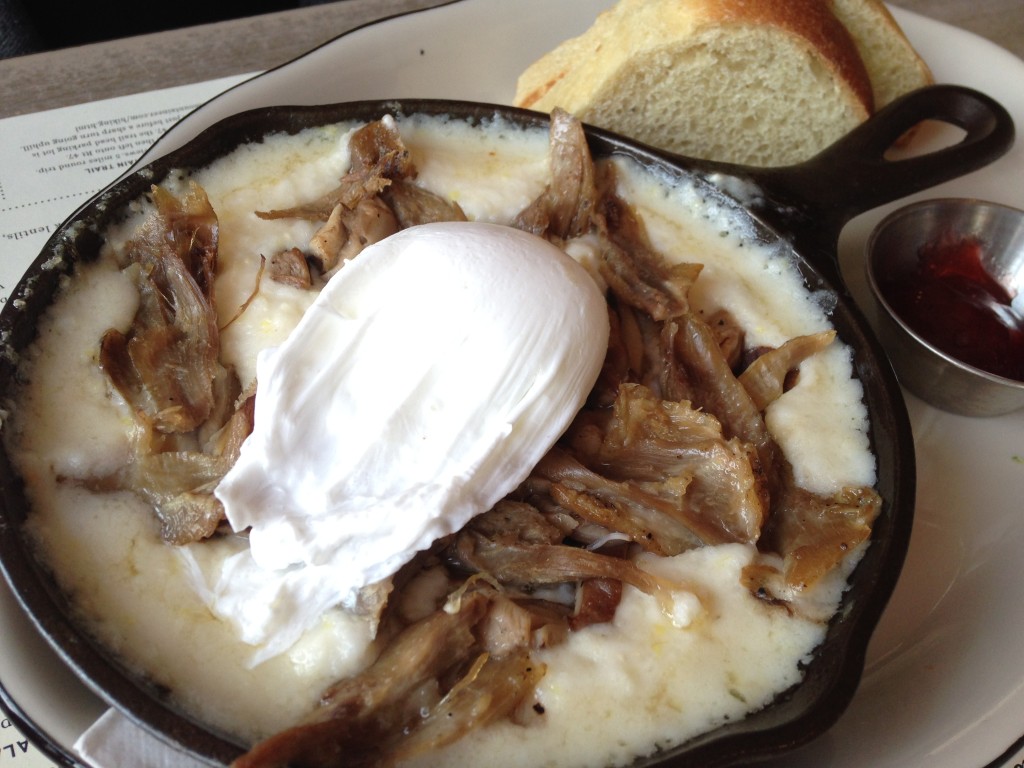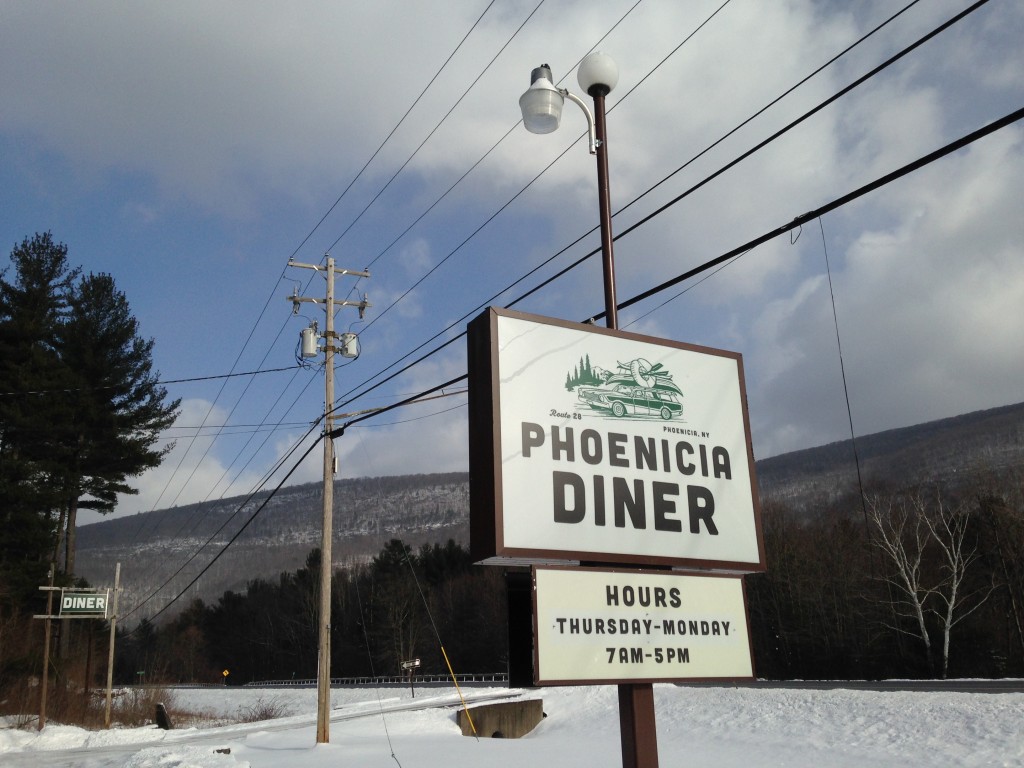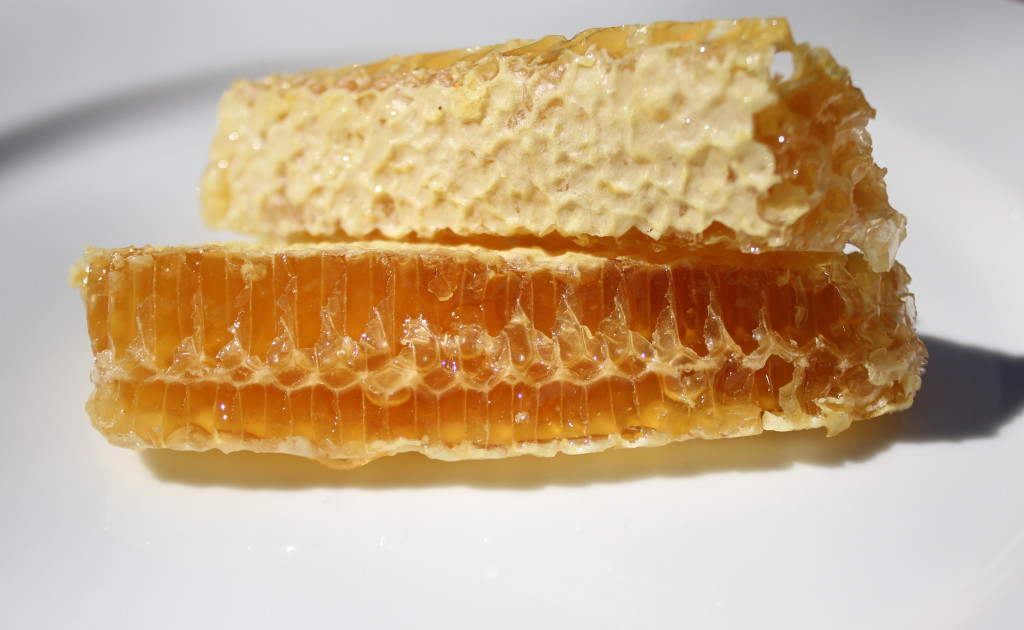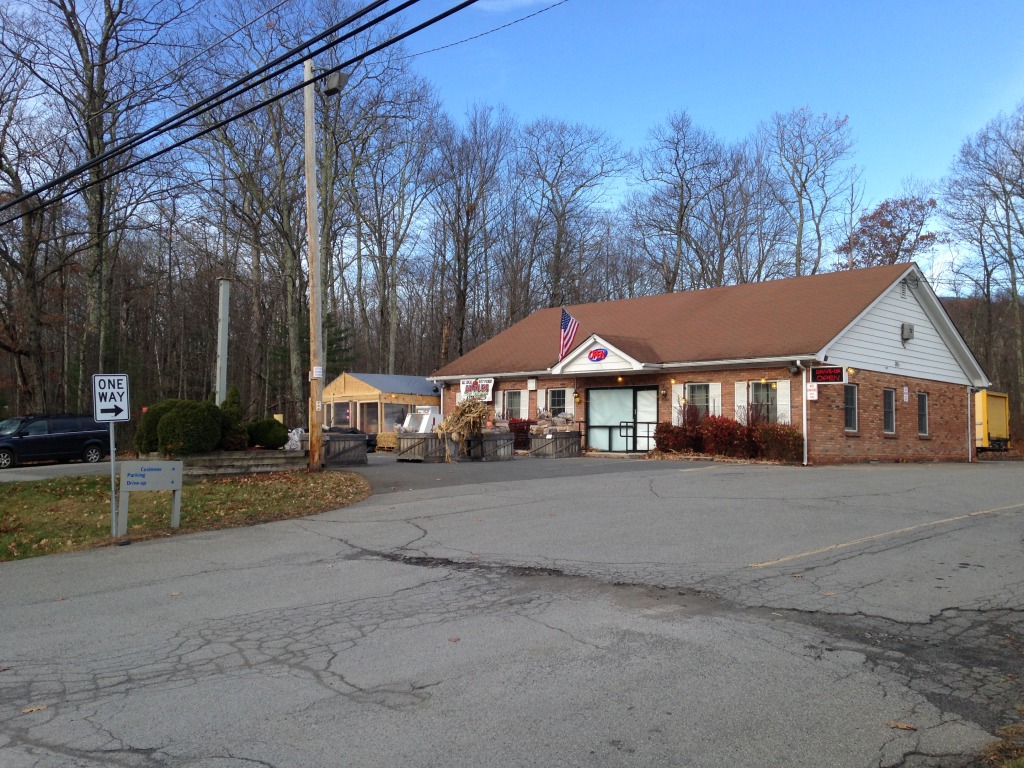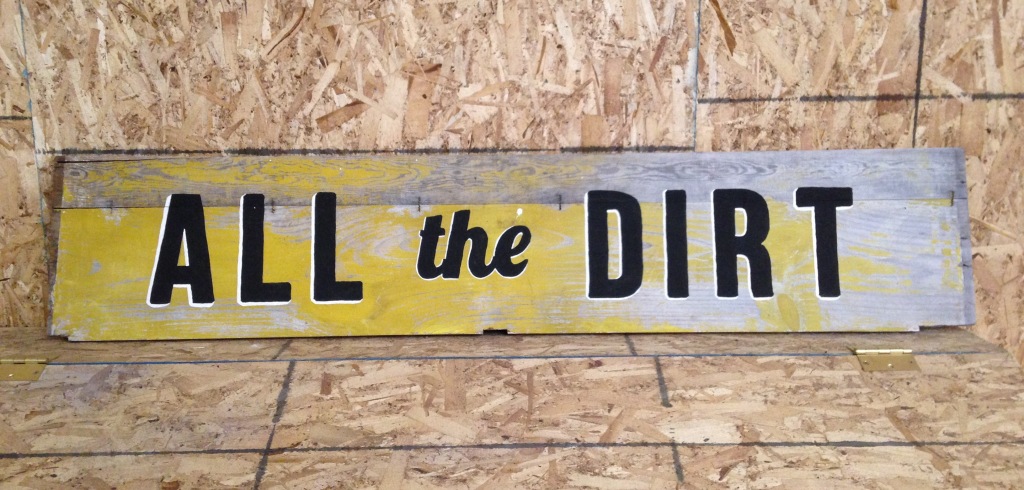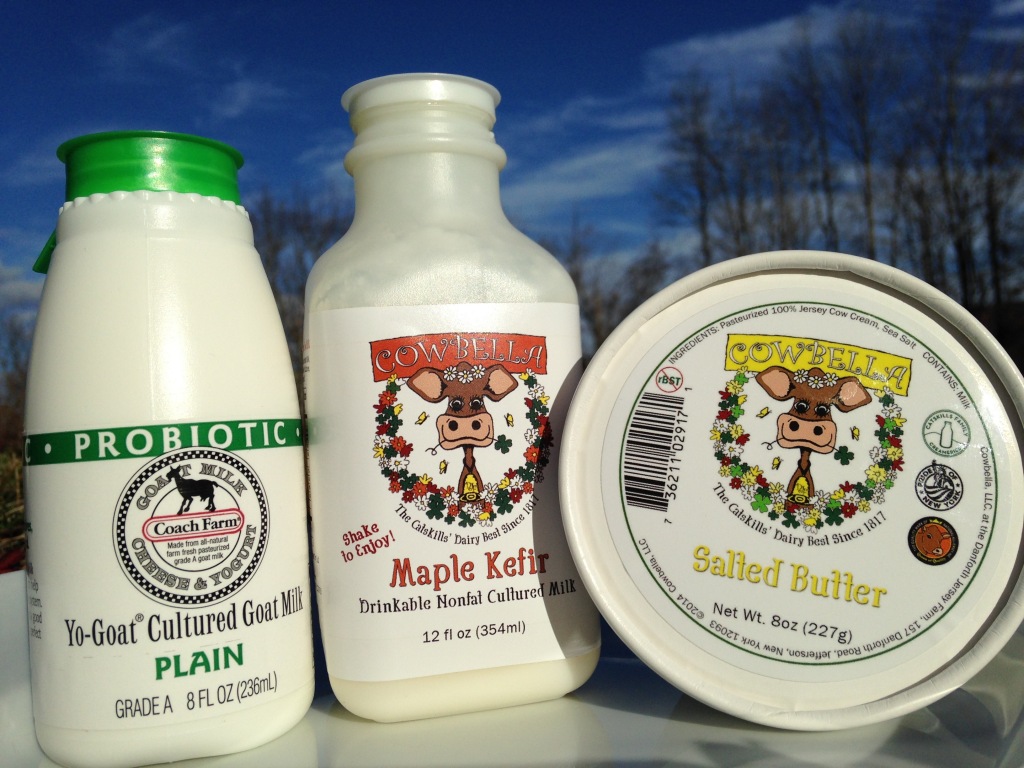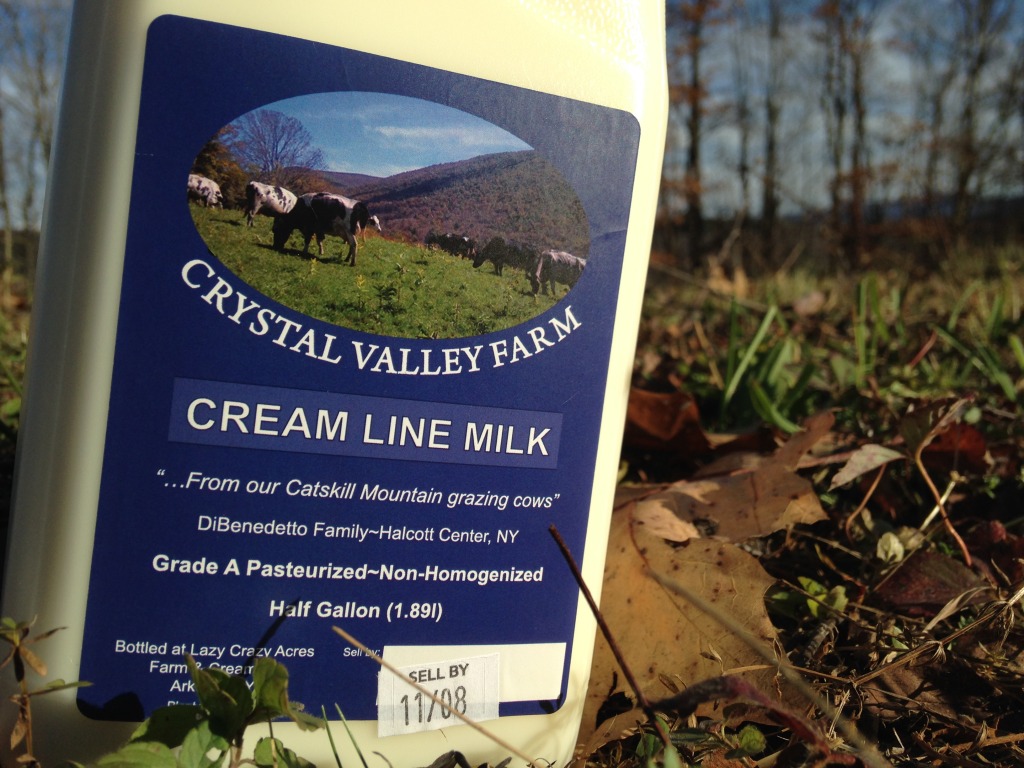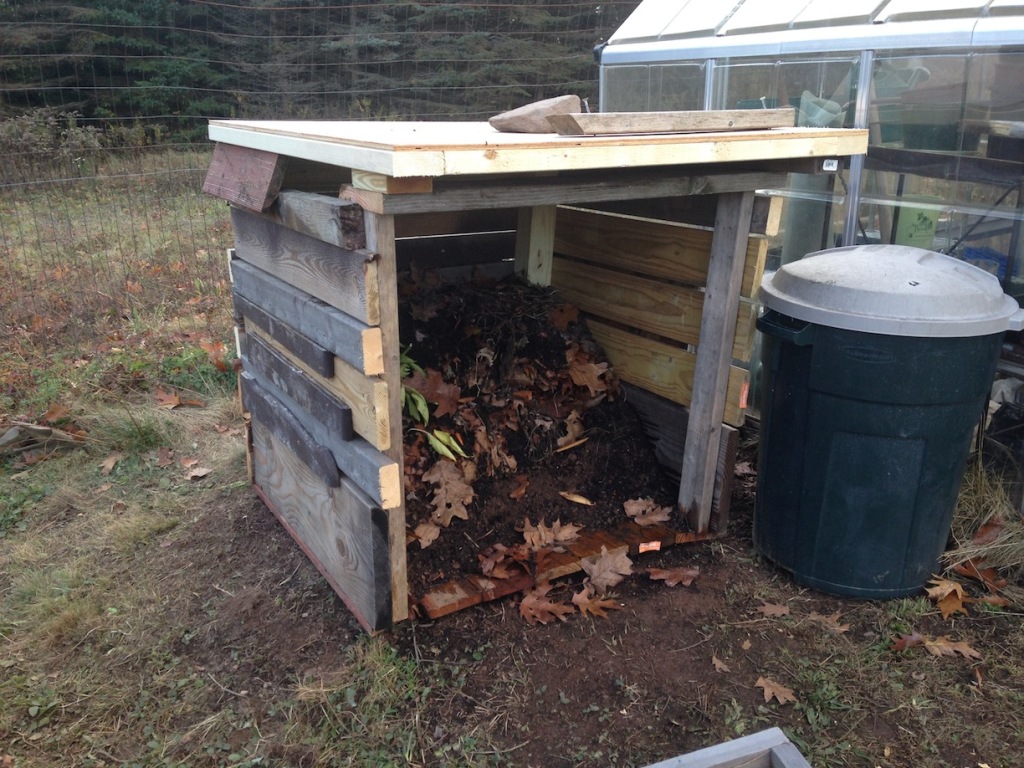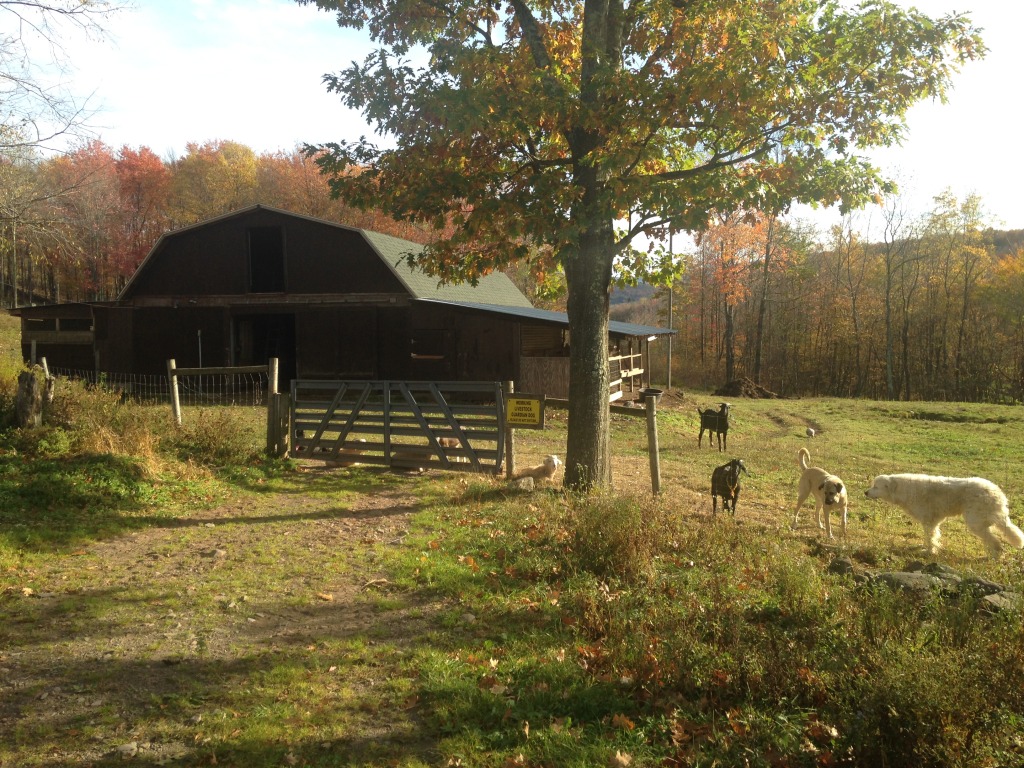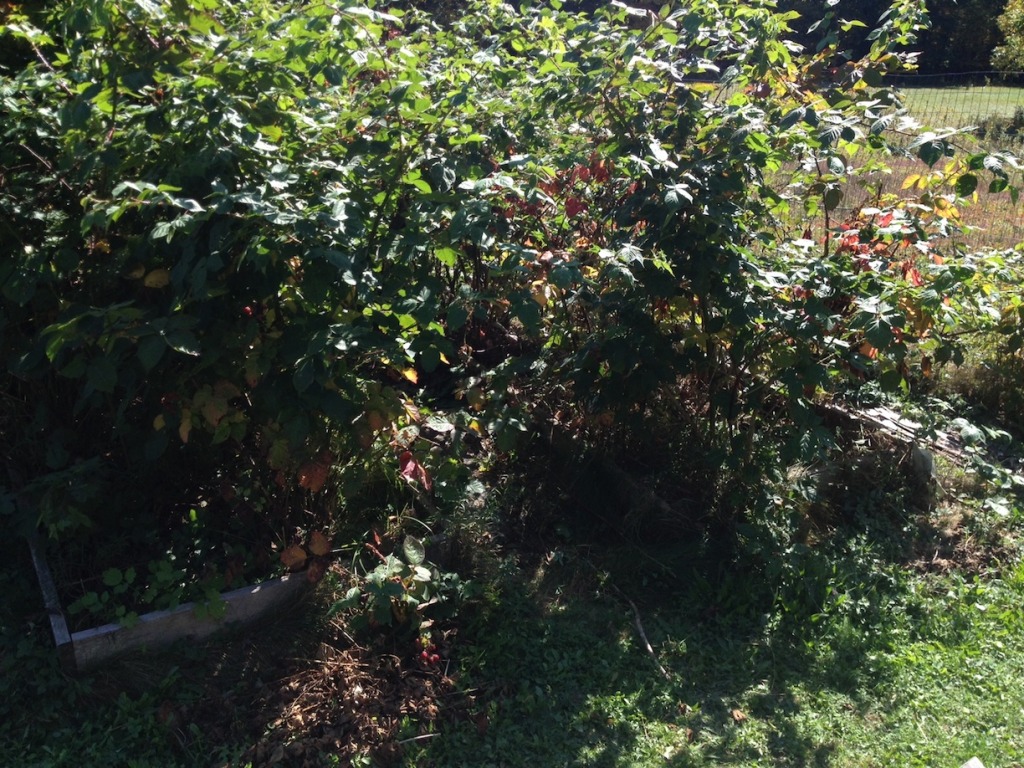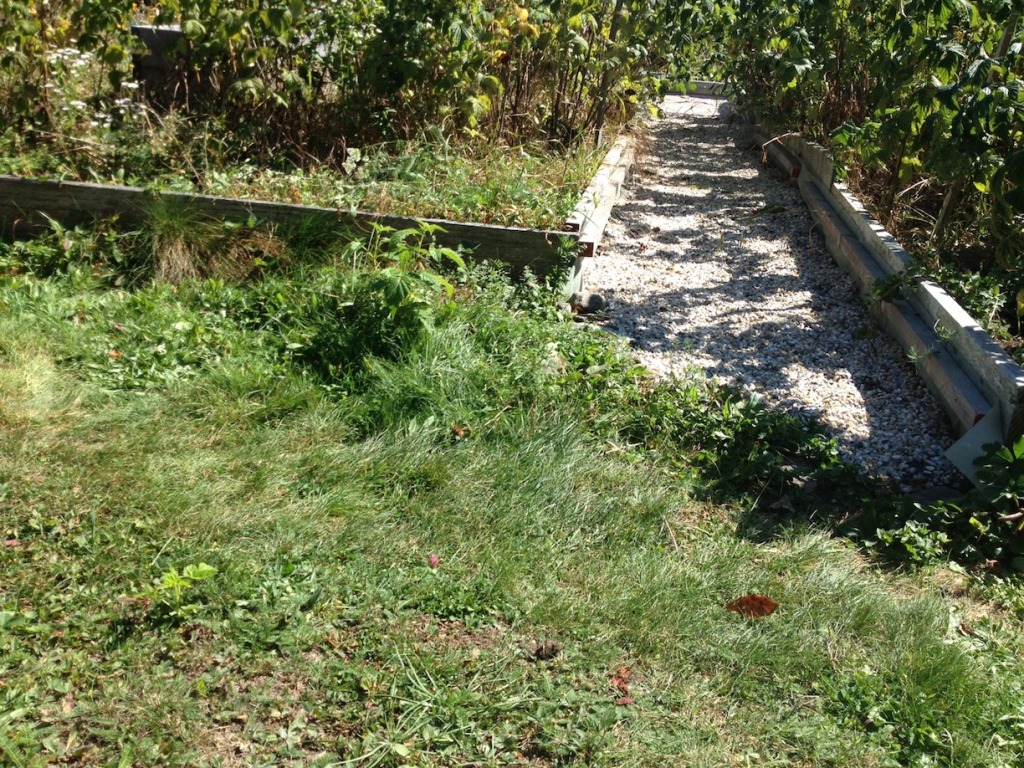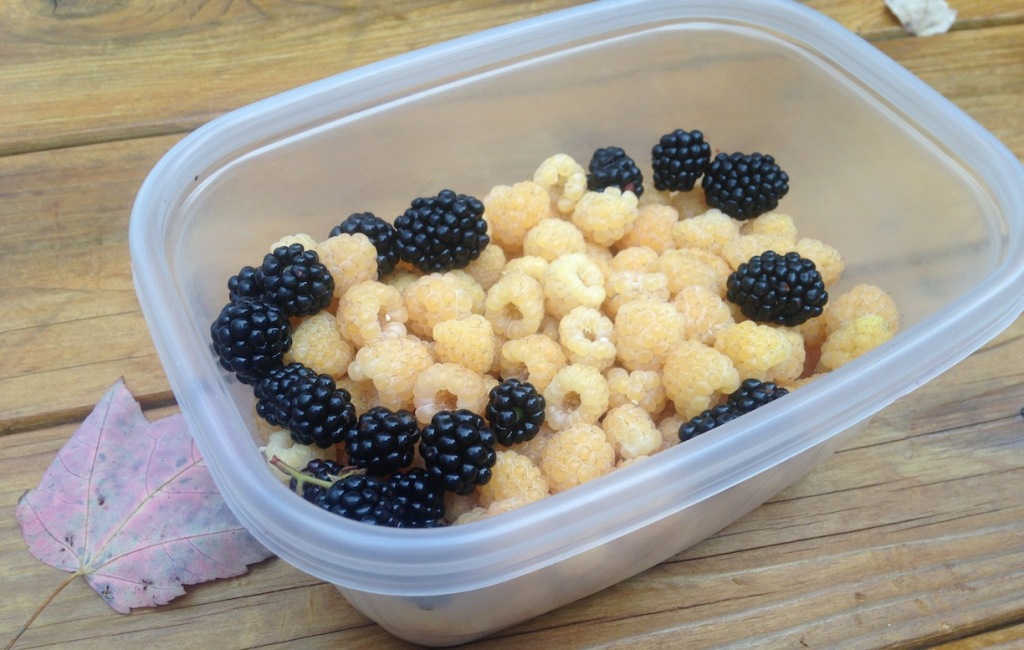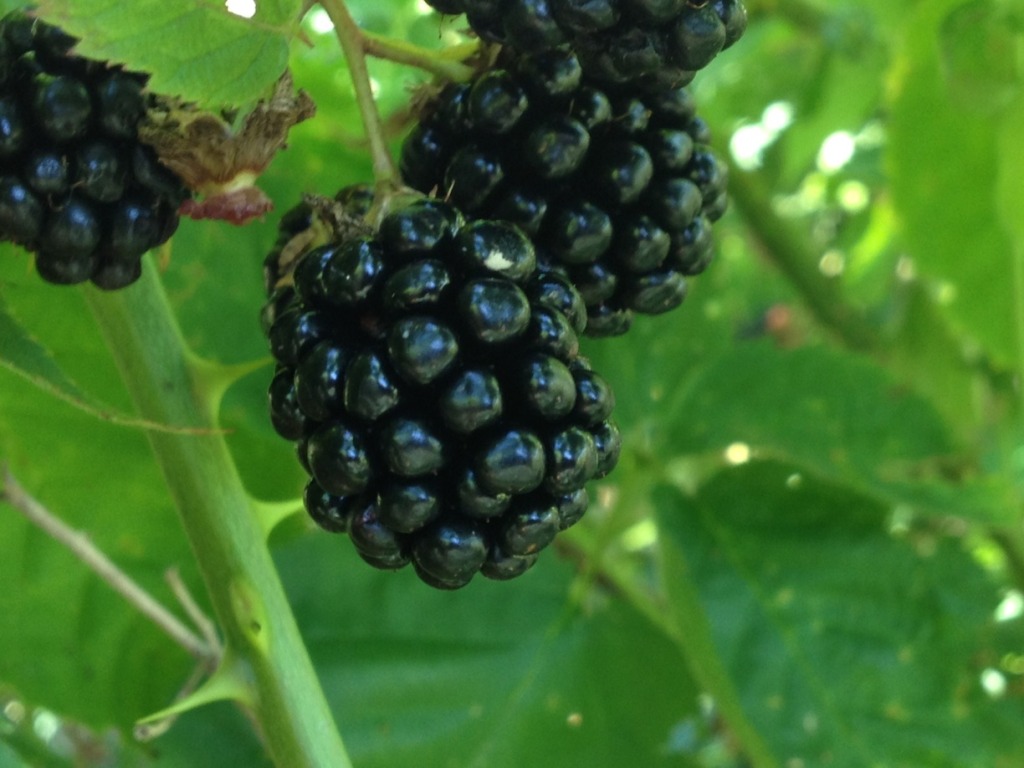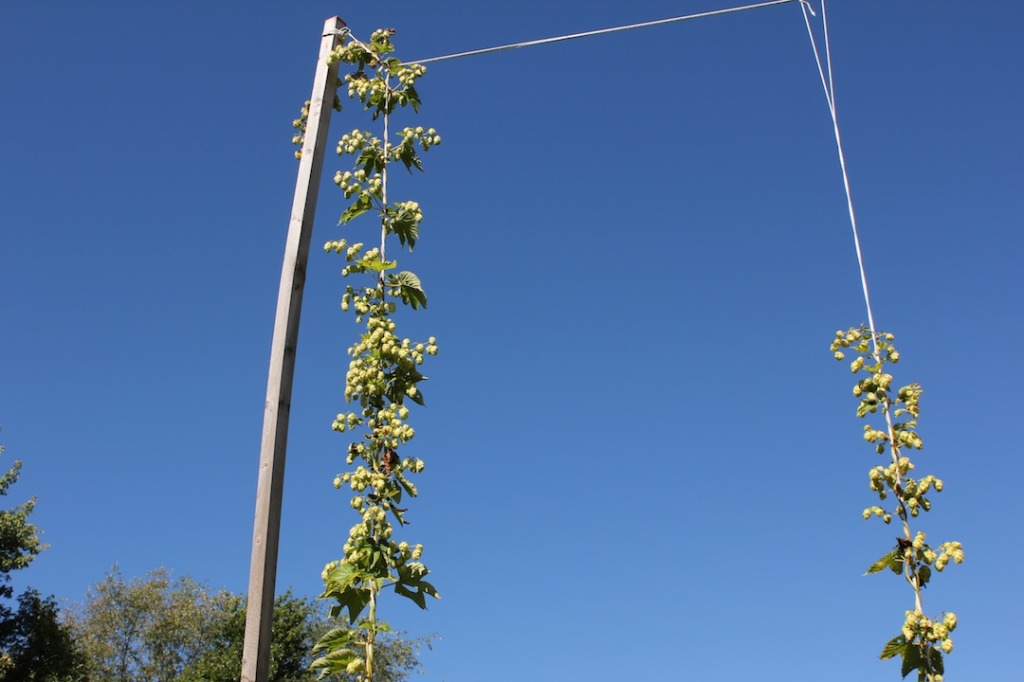The maples have been tapped and the sap is boiling, old-school style, at the Hubbell Sugar Shack and will be boiling for the next month. This sugar shack runs on a wood-burning furnace and the product, Liquid Gold is sold at Catskill Rentals and Sandford Auto Parts.
Tag Archives: Farming
The Hubbell Cider Press
The Hubbell Cider Press dates back to the 1880s. The mountain railroad allowed farmers of the Catskills access to heavy machinery left over from the civil war. Chopped apples come down the chute, top left and land in the barrel, bottom left. The mush is then pressed flat between racks on the press in the background. Juice is collected in trays beneath the press running down the centre.
Transplant Tales: Molly J Marquand
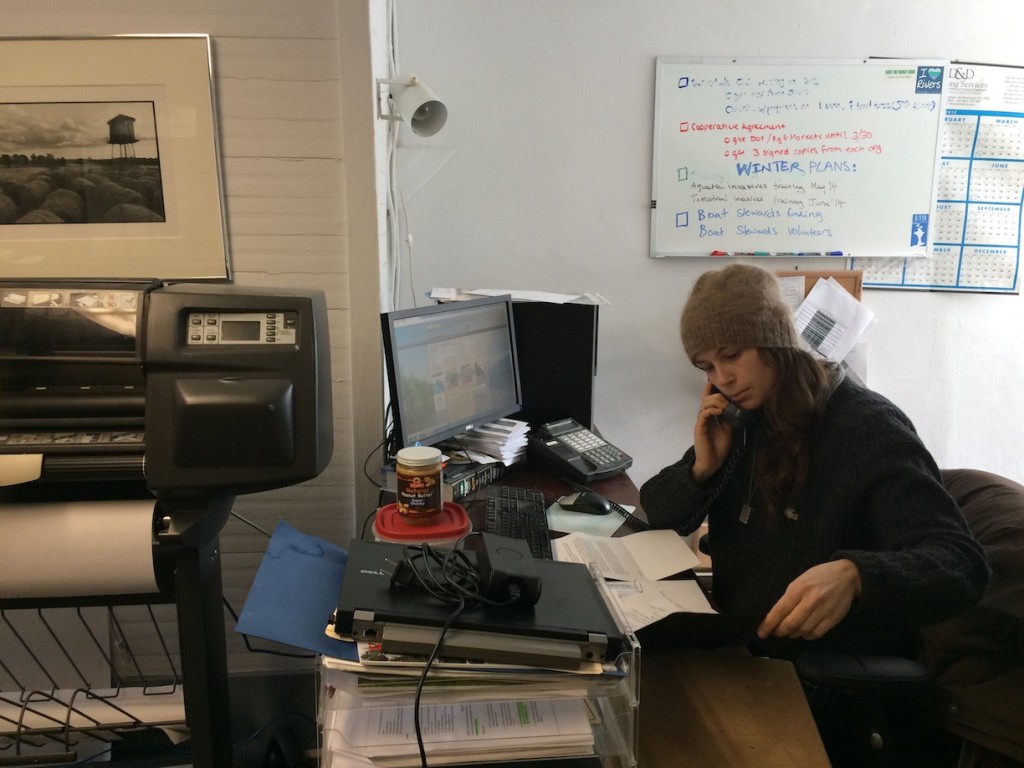
© Erik Johanson/@halcott718 Molly Marquand at her office at CRISP in the Catskills Center
“My muse is always nature.” Molly J Marquand, Catskills transplant and fellow native Brit, photographer, writer, naturalist, and wild flower gardener dishes the dirt to Upstate Dispatch in our new series Catskills Conversations.
How long have you lived in the Catskills? About two and a half years, I moved from New York City where my fiancé and I, Martin, lived for three years. I was born in England and moved to the Hudson Valley just before high school. I did go back to England to get my Masters Degree, in Taxonomy and Conservation of Plant Diversity (Botany) a joint programme with Kew Botanical Gardens and The University of Reading. But my undergraduate degree, which was in Ecology, I did at Bates in Maine.
What made you move here? I’d always had my eye on it, because I knew that I always needed space. We had this dream of having a farm and having wide open tracts of land. At the same time, I wanted to be close to my mother who lives in the Hudson Valley. [My fiancé and I] were both attracted to landscapes like the Rockies and Montana and places like that, but knowing that we were never going that far away because Martin’s family live in New York City.
Catskill Park Awareness Day: February 10th
The Catskill Center, a non-profit organization formerly known as the Catskill Center for Conservation and Development, has been an advocate for this area since its inception in 1969, instigated by Sherret Chase, Armand Erpf and Kingdon Gould Jr, to tackle preservation issues and “foster harmonious economic development” in the region.
In terms of conservation, this region has an advantage over neighbouring areas because it supplies New York City with its drinking water, which travels unfiltered to the city in huge underground tunnels. Should anything sully the NYC drinking water supply, a billion-dollar filtration system would have to be built, something that New York State is keen to avoid, so the waterways are protected by regulation. This regulation hampers development, a significant disadvantage to the local economy, so the proceeds from year-round tourism – 2.5 million tourists annually – are our biggest benefactor. The people of the Catskills sacrifice the growth of their economy so that New York City can drink pristine water.
The Phoenicia Diner Challenge
Last year, Mike Cioffi, owner of The Phoenicia Diner, and I ruminated on the costs of running a restaurant on my radio show The Economy of the Kitchen. Next week, Monday 12th January at 9am, in our second and final show, The Economy of the Diner, we’ll discuss the diner as American icon. The diner also has a rich cinematic history: Pulp Fiction, Twin Peaks, Superman, Back To The Future, Heat, Thelma & Louise, Diner: the list goes on and on. Who can forget Jack Nicholson trying to get an order of wheat toast in Five Easy Pieces or the tipping scene in Reservoir Dogs? Not to mention Meg Ryan’s glorious turn in Katz’s Deli in When Harry Met Sally and the actual movie called Diner, starring Steven Guttenberg directed by Barry Levinson.
As a foreigner, the diner is the ultimate American experience and my first diner visit was Relish in Williamsburg, sadly now slated for demolition. I’ll never forget my first order of biscuits, sausage and gravy and with whom I shared it.
My new challenge is eating my way through the menu at The Phoenicia Diner and I continued today through the skillet section. I tried the Duck & Grits skillet ($11), House Cured Corned Beef Hash skillet ($11) and the Arnold Bennett Skillet ($10). My first taste of American grits (not a British staple) was back in Brooklyn and had been quite vile experience, like eating cold porridge. PD’s grits are creamy with a hint of cheese; their scrambled eggs are the perfect combination of moist and firm. If Chef Mel uses salt in the dishes, you can’t really taste it and this is how it should be. Salt should be the choice of the customer. The Arnold Bennett Skillet ($10) came out on top in this round: locally smoked trout (delicately tasty), parmesan cheese, crème fraîche and scrambled eggs. PD makes its own bread too, which is thick, slightly chewy and tasty. Portions are generous and the eggs are noteworthy – some of the best I’ve eaten in the Catskills – for their vivid orange color. Most ingredients are sourced locally and when they run out, so does the item on the menu for the day. Eat here before you ski, on your way to Belleayre for the hearty nourishment that lasts all day. You can take sides and leftovers to go in compostable containers.
Tune in to The Economy of the Diner on WIOX at 9am on Monday January 12th, 2015.
Protected: First Person Dispatch: The Hipster
Saturday Shopping: Local Honey
Honey: a form of address, miracle food, medicinal unguent and mysterious immortal time traveler, having been found in Egyptian tombs intact, it has survived thousands of years. If only those crusty, aged urns of the amber nectar could speak, they could convey untold stories. What honey’s secret to eternal freshness? Lack of moisture, according to the Smithsonian Magazine and a combination of the following factors that produce a rare quality.
First, the aforementioned low moisture content can be survived by only very few bacteria who technically suffocate in the honey. “They just die,” writes Natasha Gelling, quoting Amina Harris, executive director of the Honey and Pollination Center at the Robert Mondavi Institute at University of California. Honey is a sugar and it’s hygroscopic, meaning that it contains very little water in its natural state, but “can readily suck in moisture” if left in an open container.
Second, honey is very acidic with a pH value between 3 and 4.5. “The acid kills whatever wants to grow there,” states Harris. Next:
“Bees are magical,” Harris jokes. But there is certainly a special alchemy that goes into honey. Nectar, the first material collected by bees to make honey, is naturally very high in water–anywhere from 60-80 percent, by Harris’ estimate. But through the process of making honey, the bees play a large part in removing much of this moisture by flapping their wings to literally dry out the nectar. On top of behavior, the chemical makeup of a bee’s stomach also plays a large part in honey’s resilience. Bees have an enzyme in their stomachs called glucose oxidase (PDF). When the bees regurgitate the nectar from their mouths into the combs to make honey, this enzyme mixes with the nectar, breaking it down into two by-products: gluconic acid and hydrogen peroxide. “Then,” Harris explains, “hydrogen peroxide is the next thing that goes into work against all these other bad things that could possibly grow.”
So, with honey being thick enough to put on wounds and containing just enough hydrogen peroxide, it’s the perfect healing unguent. Store your honey in a sealed, airless jar and it will never spoil.
Manuka honey, which is made in New Zealand from the nectar of Leptospermum scoparium, is the basis of Medihoney, which the FDA approved in 2007 for use in treating wounds and skin ulcers.
You may not be surprised about colony collapse disorder if you’re familiar with the large-scale, commercial beekeeping industry. Rather like industrial agriculture in its approach, facilities keep millions of bees in expansive fields that look, ironically, like military graveyards. Commercial “migrant” beekeeping outfits also rent bees out to large-scale agriculture, transporting hundreds of hives on enormous trucks with the bees in them and that’s before you add in pesticides and GM crops. It must be confusing and highly stressful to be a commercial bee.
There’s more urgency than ever to support locally-produced, small-batch honey. The Phoenica Honey Company, based in Phoenicia, New York, buys raw honey wholesale from apiaries in Ulster County and infuses it with natural additives like cinnamon, lavender, star anise, ETC. Proprietor Elissa Jane Mastel buys organic additives where she can and never heats the honey to above 112F and has plans for a thyme and pecan infused honey. The resultant infusions are light, delicate and perfect with tea. Phoenicia Diner and Mama’s Boy Coffee in Phoenicia and Bumble & Hive in Rhinebeck serve Phoenicia Honey Company’s honey.
At Griffins Corners in Fleischmanns, Chase Kruppo is developing Chasing Honey Farm, a new honey haven, on a family plot of five acres. It’s a new long-term sustainable agricultural venture wherein members can “buy-in” on a beehive and either, receive the honey from their bees, the proceeds from the sale of their honey at market, or a combination of both. Chase’s mission is “to create jobs, craft superior honey, and aid a declining bee population”. Watch a video presentation of Chasing Honey Farm here.
“Honeybees pollinate one third of grocery produce and it is vital to the Upstate region to secure the food it produces by supporting its pollinators,” says Chase. “46% of bee hives reporting in New York State were lost last winter due mainly to starvation and excess moisture. Part of the 2015 expansion project of Chasing Honey Farm is the creation of an apple orchard, vineyard, and plantings of white currants, lavender, and mints. Creating summer-blooming food sources for honeybees help the hives build up honey reserves for winter.”
No honey can be certified organic because bees can roam up to five miles away from the hive in every direction, but if we all planted bee-friendly, pesticide-free vegetation, it would help keep local bees healthy.
Saturday Shopping: Winter Farmer’s Markets
Could there be anything more emblematic of the revolution in our consumption habits than seeing a branch of Bank of America transformed into a farmer’s market? Route 28, the essential thoroughfare that winds through the Catskills from Kingston’s Exit 19 on Route 87 (the main arterial route travelling north through New York State from New York City) to Delhi, now has a handful of winter farmer’s markets to visit after the fair-weather markets close on or just after Thanksgiving. Year-round farmer’s markets are rare, but if we frequent them, they will spring up to meet our demand.
Here’s a modest list from Upstate Dispatch that runs east to west starting with the Kingston and Rhinebeck markets and ending in Andes.
Should you know of any more, please reply to this post and I will add them.
Kingston Farmers’ Market, Old Dutch Church, 272 Wall Street, Kingston, NY 12401. 1st & 3rd Saturdays from December through April 2015.
Rhinebeck Farmers’ Market, Rhinebeck Town Hall at 80 East Market St, Rhinebeck, NY 12572. Alternate Sundays: Dec 7 & 21, Jan 4 & 18, Feb 1 & 15, March 1, 15 & 29, April 12 & 26
Greenheart Farm Market: the former Bank of America on 2808 Route 28 in Shokan, between the Door Jamb and the intersection of Route 28 and Shokan Road, is open 24 hours. Go here to see it as its former self on Google Maps. Call Al, on (845) 657-2195.
Migliorelli Farm, 5150 Route 28, Mt. Tremper, NY. Contact: MaryAnn Migliorelli Rosolen. Phone: (845) 688-2112.
Andes Indoor Farmer’s Market, 143 Main Street, Andes, NY 13731. Contact: Cheryl Terrace. Phone: (607) 832-4660. All year round Amy delivers frozen soups to farmers and homeowners. Amy is based at the Andes Indoor Farmers Market every Saturday.
On Route 28 in Delhi, you can pick up locally-grown produce from Maple Shade Farm.
Saturday Shopping: Local Dairy
If you’re one of those people not swearing off dairy for anything from heartburn to allergies, you might consider shopping for local New York State dairy products. If you’re an ethical consumer concerned about the effects on animals and people of large-scale dairy farming, you could help by shopping the Catskills Family Creamery trail. The Catskills Family Creamery is “a group of farmstead dairy producers exploring collaborative marketing, distribution and educational activities” including small farms like Lazy Crazy Acres, Cowbella and Dirty Girl Farm producing gelato, butter, yoghurt, kefir, cow and goats milk cheeses and fluid milk. (Lazy Crazy Acres bottles the DiBenedetto family’s Crystal Valley Farm milk.) Their motto is “Small Dairies Making a Big Difference” and you could make a difference by choosing to support small dairy operations in which farmers treat their animals with respect and protect their environment: the same environment that gives clean, unfiltered drinking water to almost nine million NYC residents. Not only does it take effort to ethically farm, it takes additional time and work to protect the NYC watershed.
Mark Bittman wrote a column about milk in the New York Times this year stating:
But the bucolic cow and family farm barely exist: “Given the Kafkaesque federal milk marketing order system, it’s impossible for anyone to make a living producing and selling milk,” says Anne Mendelson, author of “Milk.” “The exceptions are the very largest dairy farms, factory operations with anything from 10,000 to 30,000 cows, which can exploit the system, and the few small farmers who can opt out of it and sell directly to an assured market, and who can afford the luxury of treating the animals decently.
We could all be a market for a local, small-holding dairy operation that Mark mentions. Vote with your dollar for the kind of farming you’d like to see in the world.
First Person Dispatch: Food
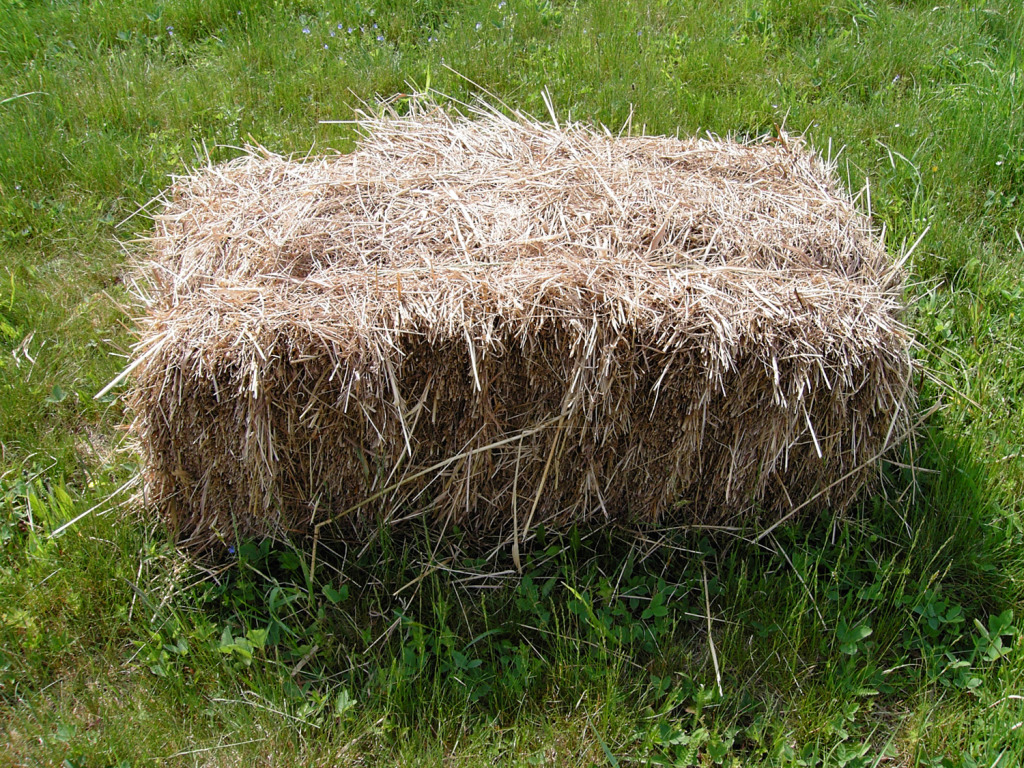 My first experience in a New York restaurant went exactly like this:
My first experience in a New York restaurant went exactly like this:
Me: ‘What’s in season?”
Waitress: “This is America: Everything’s in season.” (Italics hers.)
Duly silenced by this exchange, I flipped through the gigantic menu, struggling to make up my mind as the waitress stalked away proudly. One thing that stood out was the salmon. It was really cheap and back in England at the time smoked salmon was a luxury that I used to roll up in napkins and stuff in my pockets at corporate events. It was difficult not to be impressed by the range of choices and the prices, and in retrospect, I wonder today: what exactly is a luxury in times where “Sunday Best” is a quaint anachronism?
I’ve also recently given more thought to the thorough dressing down my American friend had given to a British sandwich on her first visit to London in the mid-nineties. Taking stock of what now seems like meagre offerings in Britain’s Marks & Spencer Food Hall, my friend exclaimed loudly: “call that a sandwich?!”
Side Note: Compost
The Fine Art of Cultivation: Two Stones Farm
“The goal of farming,” wrote Masanobu Fukuoka, farmer and author of One Straw Revolution, “is not the growing of crops, but the cultivation and perfection of human beings”.
The delicate words of this Japanese maestro echo all over the Catskill Mountains as young people, city-bred and country-born, return to farming in droves. Agricultural courses spring up like new shoots across the Northeastern states to respond to demand. Furthermore, there’s a flurry of articles regularly in the media about diverse people quitting New York City. Young, old, wealthy and those tired of the city’s rising cost of living are all looking to make upstate their home. Homesteading is an art in itself and the Catskills are bustling with creative activity. Small-scale farming, the kind that covers the property’s operating costs, doesn’t have to be an enormous amount of work and new busy upstaters with enough capital can now hire farmers and farmer’s apprentices to run their farms while they continue their existing businesses. City transplants who have made the leap quickly find that there’s an invigorating honesty in land cultivation that is rarely found in city life.
Novice homesteaders looking for an exquisitely picturesque organic farm on which to model their fledgling operation should look no further than Two Stones Farm in Halcott, New York.
Know Your Soil
Knowing your soil and knowing what grows well in your environment is key to getting illustrious crops year after year.
Shortly after moving to a 2500ft elevation in the Catskills, Michael Urbanski was advised to plant berries, among other crops, and they are thriving in the rocky, mountain soil. The berries have literally gone wild, growing underneath the garden fence and into the neighboring field and overtaking neighboring raised beds. They were started with a few reeds and, despite extensive winter pruning, still return aggressively every year yielding abundant crops well into October.
You can see the two original wooden raised beds in the image below:
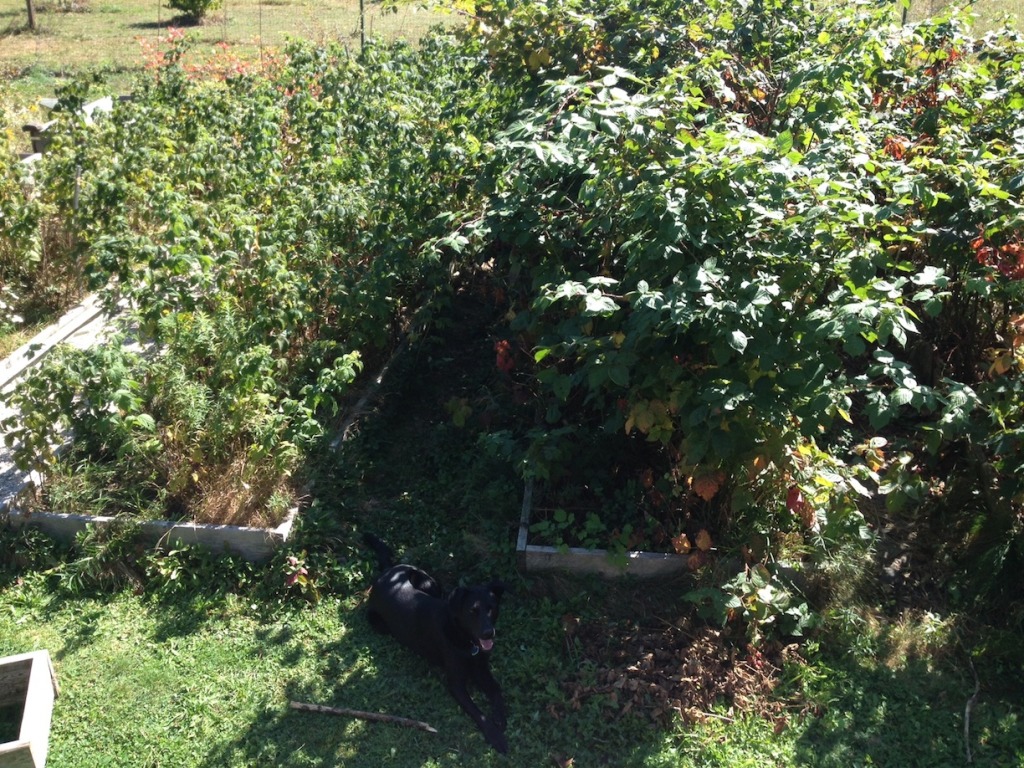
The two original wooden raised beds: blackberries on the right, raspberries on left, dog in the middle…
The blackberries overtook the bed to their right and went underneath the fence and out into the wild:
A similar pattern occured with the raspberries growing in the left bed. In the picture below, they started in the bed on the right and over time spread into two adjacent beds and out into the main garden area.
Says Michael: “I’m curious to see if the reeds growing beyond the fence will produce next year, and if so, if they’ll survive the local scavengers long enough to be harvested. They are prolific growers, and require very little maintenance except for an annual prune. Be warned though, never plant these things anywhere near other projects that you have because as you can see they will quickly spread and overtake a large area if left unattended”. With minimal effort, these garden berry crops are yielding at least two to three pounds of fruit a day over the Summer season and into the Autumn simply because it’s an ideal location for them. Plant food that thrives in your particular environment and trade with neighbors.
Hops: The New York State Revival
In 1976 the New York State legislature passed the Farm Winery Act, a law that allowed small wineries to sell their products directly to customers for the first time. The success of Finger Lakes Wine Country in the 30-odd years since that Act had legislators pondering if they could do the same for the state’s beer industry and in 2012 they passed the Farm Brewery Law. The law took effect in January 2013.
The Farm Brewery Law allows for the issue of a new Farm Brewery License. Supported by New York State Senator David Valesky, it’s designed to provide an incentive for farmers to grow hops and other agricultural products associated with the production of craft beers and cider. Continue reading
